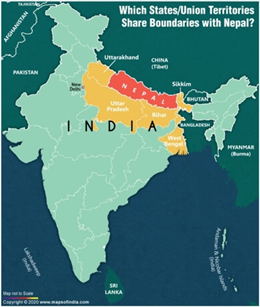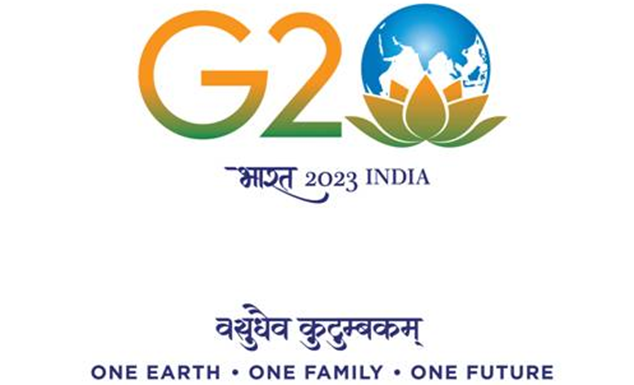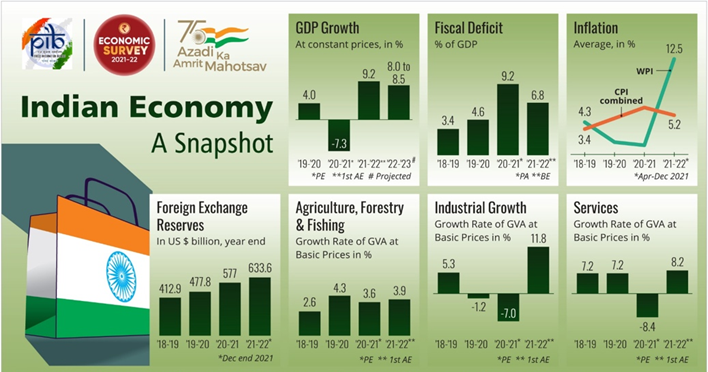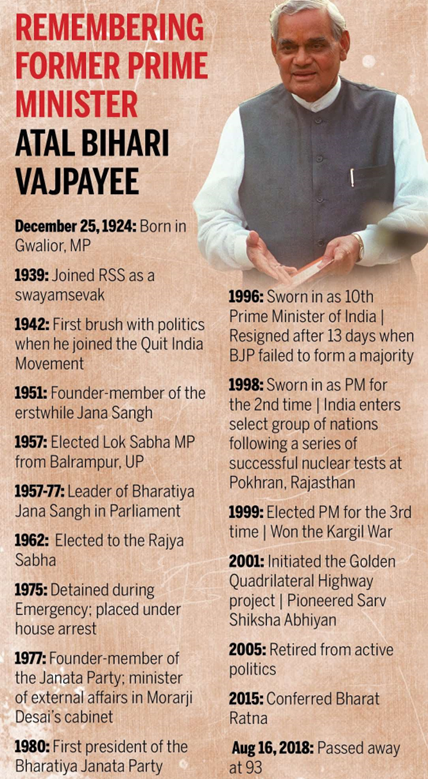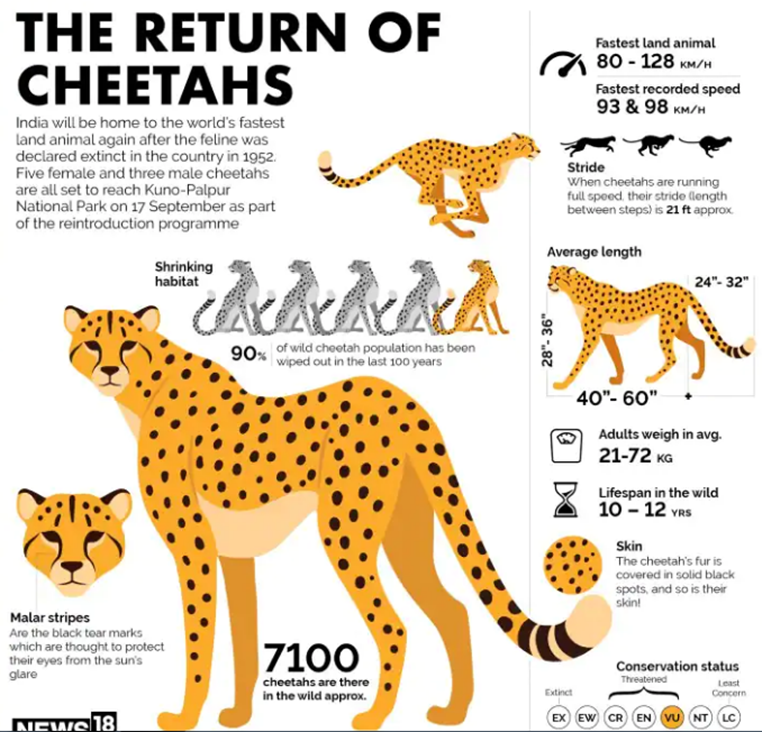Thursday, 29th December 2022
Resolving Interstate disputes - Edukemy Current Affairs
In News
Both houses of the Maharashtra Assembly passed a unanimous resolution to support a legal battle to resolve the border dispute between Maharashtra and Karnataka. This comes just days after the Karnataka Assembly passed a similar resolution reiterating Karnataka’s position on the issue.
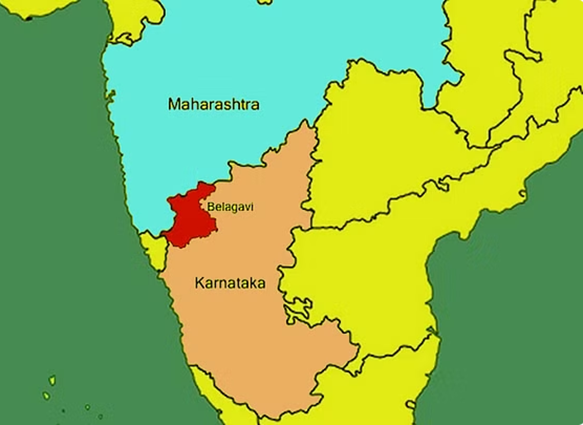 About the Maharashtra-Karnataka border dispute
About the Maharashtra-Karnataka border dispute
- The border dispute over Belagavi, Karwar and Nipani in North Karnataka is long-standing.
- It has its origin in the States Reorganization Act of 1956 when state boundaries were redrawn on linguistic lines and Belagavi became part of the erstwhile Mysore state.
- Maharashtra claims that parts of Belagavi, i.e. 865 villages, including Belagavi (then Belgaum), Carvar and Nipani, where Marathi is the dominant language, should remain in Maharashtra.
How is the issue being resolved?
- State Committee: In 1960, both States agreed to set up a four-man committee with two representatives from each State. However, the committee could not arrive at a unanimous decision.
- Commission established by Centre: In October 1966, the Centre set up the Mahajan Commission, to resolve the border dispute in Maharashtra, Karnataka and Kerala.
- The Commission recommended that Belgaum and 247 villages remain with Karnataka. Maharashtra rejected the report, and in 2004, moved to the Supreme Court.
- Mutual Negotiation: Attempts are being made to resolve inter-state disputes with the cooperation of both sides, with the Centre working as a facilitator or a neutral mediator.
- If both sides agree to a solution, Parliament can bring a law to alter state boundaries, such as the Bihar-Uttar Pradesh (Alteration of Boundaries) Act of 1968 and the Haryana-Uttar Pradesh (Alteration of Boundaries) Act of 1979.
- In the Belagavi (Belgaum) issue, Union Home Minister has asked the two Chief Ministers to form a six-member team, comprising three ministers from each side, to address all boundary issues.
What are the other available methods of resolution?
- Judicial redressal: Article 132 empowers Supreme Court with original jurisdiction over disputes between two or more States, if the dispute involves any question, whether of law or fact, on which the existence or extent of a legal right depends.
- Inter-state Council: Article 263 of the Constitution gives powers to the President to set up an Inter-state Council for the resolution of disputes between states. The Council is envisaged as a forum for discussion between the states and the Centre. In 2021, the Centre reconstituted the Inter-state Council and the body now has 10 Union Ministers as permanent invitees
What are the other interstate border issues in India?
- Assam-Meghalaya: Assam and Meghalaya have a longstanding dispute in 12 stretches of their 884-km shared border in West Khasi Hills district, Kamrup, East Jaintia Hills, Cachar in Assam etc.
- Assam Nagaland: The dispute, has a decades-old history which was worsened by the creation of Nagaland as a separate state in 1963. Dispute regions are in Golaghat district, Jorhat district and Sibsagar district
- Haryana-Himachal Pradesh: The Parwanoo region has had the spotlight over the border dispute between the two states.
- Himachal Pradesh-Ladakh: Himachal and Ladakh lay claim to Sarchu, an area on the route between Leh and Manali.
- Arunachal Pradesh-Assam: Arunachal's grievance is that the re-organization of North Eastern states unilaterally transferred several forested tracts in the plains that had traditionally belonged to Arunachal’s tribals, to Assam.
Source:
https://indianexpress.com/article/explained/how-are-disputes-between-states-resolved-8349561/
Image Source:
https://www.thequint.com/news/india/karnataka-maharashtra-border-dispute-who-said-what
INC Foundation Day - Edukemy Current Affairs
In News:
- INC celebrates its foundation day across the country
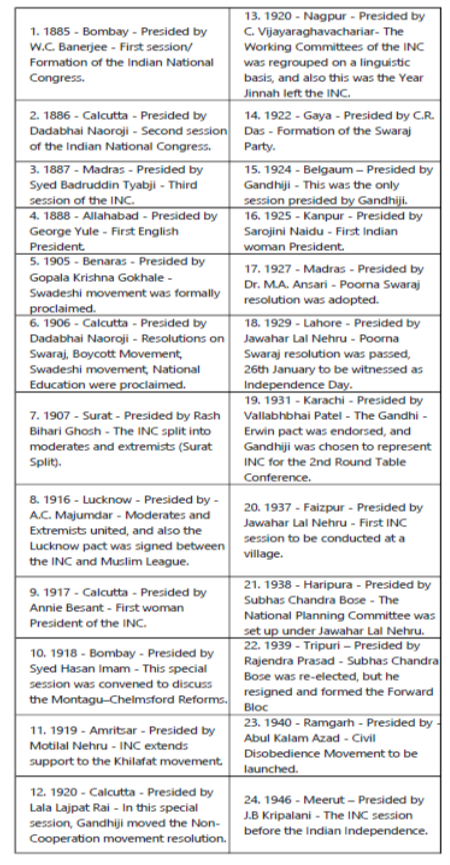 About the News:
About the News:
- The Indian National Congress (INC) recently marked its 138th foundation day on December 28 at its All-India Congress Committee headquarters in New Delhi.
- On this occasion, several party members shared messages of its history, invoking the party’s role in the Indian freedom struggle and role in independent India.
INC:
- Background: The first INC meeting was held in Mumbai in 1885 with O. Hume as one of its founding fathers.
- Foundation: On December 28, 1885, 72 social reformers, journalists and lawyers congregated for the first session of the INC at Gokuldas Tejpal Sanskrit College, Bombay.
- Objective: The initial aim of this group was not to demand independence from the ongoing colonial rule but to influence the policies of the British government in favour of Indians.
- Safety-valve: The party has been often described as providing a “safety valve” as the time, through which Indians could air out their grievances and frustration.
- Prominent leaders: Its founding leaders includes Dadabhoy Nairoji, W. C. Bonnerjee, Pherozeshah Mehta, and Gopal Krishna Gokhale besides, William Wedderburn among others.
Important features of INC:
- Shift in priorities: The objective of the party shifted to demands from the colonial administrators for the rights and powers allowed to Indians.
- Party of elites: In the initial years, the party largely consisted of educated, upper-class people who were likely to have studied abroad.
- Limited in scope: Although the members frequently protested issues of British colonialism, such as the Bengal famine and the drain of wealth from India, these protests were at this point usually limited to prayers and petitions, including writing letters to the authorities.
- Splits: Due to ideological differences between the ‘moderates’ led by Gopal Krishna Gokhale and Surendranath Banerjea, and the ‘extremists’ led by Bal Gangadhar Tilak, there was a split in the party at Surat in 1906.
- Reconvening: The Bombay session of INC in 1915 saw these two groups coming together again as one.
- Later phase: The Congress was led by a number of notable figures, including Mahatma Gandhi, Jawaharlal Nehru, and Sardar Patel who helped to guide the party and the independence movement towards its ultimate goal of independence from British rule.
- Importance: The Congress was instrumental in achieving India's independence in 1947 and has continued to play a central role in the country's political landscape which has today become one of the oldest and largest political parties in India.
Source:
https://indianexpress.com/article/explained/explained-politics/on-congress-foundation-day-a-brief-history-of-the-party-8348538/
Delimitation and its importance
In news
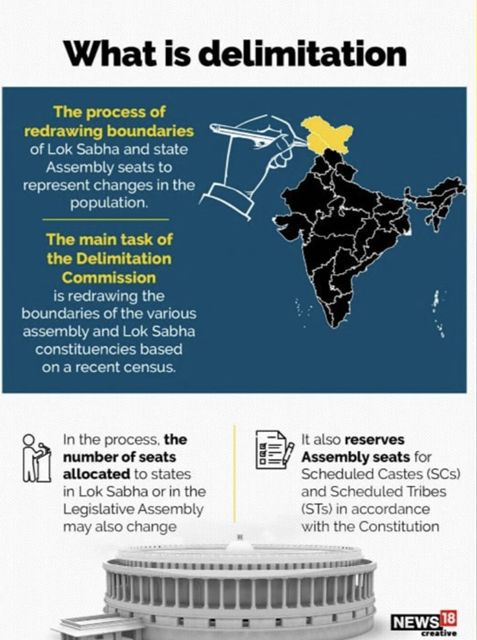
The Election Commission of India has said that it has begun the process of delimitation of Assembly and Parliamentary constituencies in Assam.
About Delimitation Exercise
- Delimitation is the act of redrawing boundaries of Lok Sabha and state Assembly seats to represent changes in population.
- As the population does not grow uniformly across all areas of a state, delimitation of constituencies is periodically carried out to reflect not only an increase in population but changes in its distribution.
- Hence, the main objective of delimitation is to provide equal representation to equal segments of a population.
Who carries out?
- Delimitation is carried out by an independent Delimitation Commission, appointed by the Government of India under provisions of the Delimitation Commission Act.
- The Commission is appointed by the President of India and works in collaboration with the Election Commission of India.

- It is composed of the following:
- Retired Supreme Court judge
- Chief Election Commissioner of India and
- Respective State Election Commissioners
- Further, Delimitation Commission is to work without any executive influence, and its orders are final and cannot be questioned before any court as it would hold up an election indefinitely.
Process of Exercise
- Under Article 82, Parliament is to enact a Delimitation Act after every Census.
- Once the Act is in force, the Union government sets up the Delimitation Commission.
- The Commission is also tasked with identifying seats reserved for Scheduled Castes and Scheduled Tribes.
- Later, draft proposals of the Delimitation Commission are published for public feedback.
- The final order is published in the Gazette of India and the State Gazette concerned and comes into force on a date specified by the President.
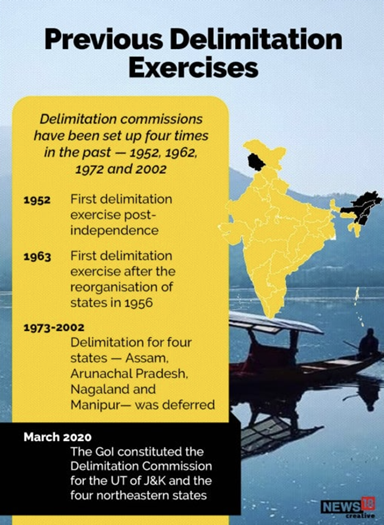 Issues/challenges associated
Issues/challenges associated
- The last delimitation exercise that changed the state-wise composition of the Lok Sabha was done half a century ago in 1976.
- The Constitution mandates that the number of Lok Sabha seats allotted to a state would be such that the ratio between that number and the population of the state is same for all states.
- However, this provision meant that states that took little interest in population control could end up with a greater number of seats in the Parliament.
- The fear of losing political representation was greater among Southern states, which have had greater success in controlling populations but also economically developed such that they generated a lot more per capita revenue than the northern states.
- Delimitation on the basis of population would disenfranchise them politically while the central government would continue to benefit from these states’ economic contributions to the country.
- Also, the constitution has capped the number of Lok Shaba & Rajya Sabha seats to a maximum of 550 & 250 respectively and hence as a result, increasing populations are being represented by a single representative.
Source
Election Commission begins ‘delimitation’ in Assam: What this exercise is, why it is important
Image Source
https://images.moneycontrol.com/static-mcnews/2021/06/6-jk-delimitation-process.jpg
India - Nepal relations - Edukemy Current Affairs
Why in news?
- Pushpa Kamal Dahal “Prachanda” was sworn in as Nepal’s new Prime Minister.
- It is believed that KP Sharma Oli, Deuba's predecessor, was pro-China, and that India's future has been set back by the alliance of Communist forces.
- After relations between India and Nepal deteriorated under Oli's government from 2015 to 2016 and again from 2018 to 2021, things improved under Deuba's leadership as prime minister in 2021.
|
About India-Nepal Relations
|
Key Areas of Cooperation
Challenges
Territorial Disputes
- Kalapani boundary issue is the major bone of contention. These boundaries had been fixed in 1816 by the British, and India inherited the areas over which the British had exercised territorial control in 1947.
Issues with Peace and Friendship Treaty
- The 1949 Treaty of Peace and Friendship was sought after by the Nepali government in order to maintain the particular ties it had with British India, as well as to grant them an open border and the ability to work in India.
- Nowadays, however, it is seen as a manifestation of an unbalanced relationship and an Indian imposition.
China’s role
- China has gradually displaced India's influence over Nepal in recent years through making investments, providing help, and making loans.
- As part of its broad aspirations to increase international trade, China views Nepal as a crucial partner in its Belt and Road Initiative (BRI) and wants to invest in Nepal's infrastructure.
Internal Security
- The fact that the border between India and Nepal is mostly unguarded and used as a recruiting ground for terrorist organisations and insurgent groups from India's North Eastern region raises serious security concerns for that country.
Content Source Link:
https://indianexpress.com/article/explained/explained-global/prachanda-is-pm-new-political-ties-in-nepal-concern-in-india-8345358/
Reservation of seats in Local Body Elections
- Context: Recently the Allahabad HC ordered the Uttar Pradesh government to notify the ULB polls without any reservation for the OBCs.

- The 73rd & 74th Constitutional Amendment Act of 1992 provides for the reservation of seats for scheduled castes and scheduled tribes in every panchayat/municipality (i.e., at all three levels) in the proportion of their population to the total population in the panchayat area/municipal area.
- Reservation of offices of chairperson:
- Further, the state legislature shall provide for the reservation of offices of chairperson in the panchayat/municipality at any other level for the SCs and STs.
- Reservations for women:
- The act provides for the reservation of not less than one-third of the total number of seats for women (including the number of seats reserved for women belonging the SCs and STs).
- Further, not less than one-third of the total number of offices of chairpersons in the panchayats/municipality at each level shall be reserved for women.
- Reservations for Backward Classes: The act also authorises the legislature of a state to make any provision for reservation of seats in any panchayat/municipality or offices of chairperson in the panchayat/municipalities at any level in favour of backward classes.
Source:
https://www.thehindu.com/news/national/other-states/allahabad-hc-orders-conduct-of-urban-local-body-elections-in-up-without-obc-reservation/article66310032.ece
Rise in Road Fatalities - Edukemy Current Affairs
- Context: As per the Road Accidents in India-2021 report fatalities due to road accidents resumed an upward trajectory, post-COVID decline.

- The report provides information on various facets of road accidents in the country during the calendar year 2021.
- Published by: Ministry of Road Transport and Highways
Related Initiatives:
- Brasilia Declaration on Road Safety (2015):
- The declaration was signed at the second Global High-Level Conference on Road Safety held in Brazil.
- India is a signatory to the Declaration.
- The countries plan to achieve Sustainable Development Goal 3.6 i.e. to halve the number of global deaths and injuries from road traffic accidents by 2030.
- Decade of Action for Road Safety 2021-2030:
- The UN General Assembly adopted a resolution "Improving global road safety " with the ambitious target of preventing at least 50% of road traffic deaths and injuries by 2030.
- The Global Plan aligns with the Stockholm Declaration, by emphasizing the importance of a holistic approach to road safety.
- The International Road Assessment Programme (iRAP): It is a registered charity dedicated to saving lives through safer roads.
Source:
https://pib.gov.in/PressReleaseIframePage.aspx?PRID=1887097#:~:text=As%20per%20the%20report%2C%20there,in%20accidents%2C%20fatalities%20and%20injuries.
https://www.thehindu.com/news/national/after-2020-covid-blip-road-fatalities-on-the-rise-again-in-2021/article66314180.ece/amp/
H9N2 vaccine for Avian Influenza
Context: HesterBio gains on acquiring technology for H9N2 avian influenza virus vaccine from ICAR – NIHSAD

- Low pathogenic avian influenza H9N2 strain causes comorbidity in poultry flocks throughout the year, leading to huge economic losses to poultry farmers.
- The disease generally has a low mortality rate of up to 6% but can increase significantly in the presence of other infections. It could also lead to an irreversible egg production drop (up to 50%) in layer birds and a performance loss in broilers.
- This indigenously developed inactivated H9N2 vaccine for poultry uses a local isolate, thereby ensuring that the vaccine is made from the local strain and not by importing any exotic strain.
- It provides protective immunity in chickens for 6 months following vaccination and covers all the antigenically divergent strains of the H9N2 low pathogenic avian influenza virus currently circulating in India.
- The vaccine will help in the prevention and control of infections, specifically in layer and breeder chickens thereby reducing production losses and improving the livelihood of poultry farmers.
Sources:
https://wap.business-standard.com/article-amp/news-cm/hesterbio-gains-on-acquiring-technology-for-h9n2-avian-influenza-virus-vaccine-from-icar-nihsad-122122800436_1.html
Image Source:
https://www.cnbctv18.com/india/government-research-body-transfers-vaccine-tech-for-h9n2-avian-influenza-virus-to-four-companies-15521281.html
Missile Pralay - Edukemy Current Affairs
Context: Pralay — India’s first tactical quasi-ballistic missile, a step towards its own rocket force
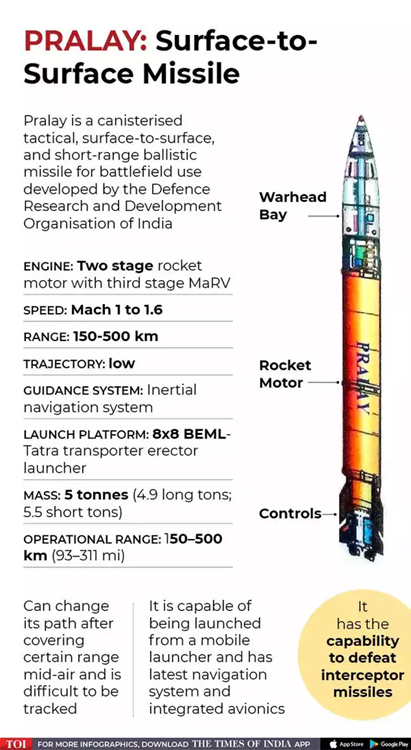
- The Pralay missile project was sanctioned in 2015 and is a derivative of the Prahaar missile
- Pralay was formed through elements from multiple missile programmes that include the K-series of submarine-launched ballistic missiles and the ballistic defence shield programme.
- The canisterised Pralay missile is powered by a solid propellant rocket motor, and it can carry a high explosive preformed fragmentation warhead, penetration-cum-blast (PCB) and runaway denial penetration submunition (RDPS).
- Pralay is a quasi-ballistic weapon, designed to evade interceptor missiles; it has a low trajectory, is largely ballistic, and can manoeuvre in flight.
- India's Pralay missile can be compared to China’s Dong Feng 12 and the Russian Iskander missile that has been used in the ongoing war with Ukraine.
- Pralay, along with the BrahMos supersonic cruise missile, will form the crux of India’s planned Rocket Force.
- While BrahMos has high agility, stealth and even loitering capability, Pralay has the advantage of the speed and countering it is a difficult task, even for modern air defence systems.
Sources:
https://theprint.in/defence/pralay-indias-first-tactical-quasi-ballistic-missile-a-step-towards-own-rocket-force/1283224/
Image Source:
https://timesofindia.indiatimes.com/india/pralay-missile-to-be-deployed-along-china-border/articleshow/96575816.cms
National Commission for Protection of Child Rights (NCPCR)
Why in news? Recently, NCPCR warned NGOs against the depiction of vulnerable children for fundraising.
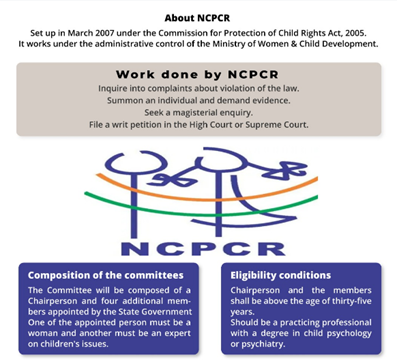
About:
- NCPCR is a statutory body set up in March 2007 under the Commissions for Protection of Child Rights (CPCR) Act, 2005.
- It is under the administrative control of the Ministry of Women & Child Development.
- The Commission's mandate is to ensure that all laws, policies, programmes, and administrative mechanisms are in consonance with the child rights perspective as enshrined in the Constitution of India and also the UN Convention on the Rights of the Child.
- It monitors the implementation of the Protection of Children from Sexual Offences (POCSO) Act, 2012.
https://www.thehindu.com/news/national/ncpcr-warns-ngos-against-depiction-of-vulnerable-children-for-fundraising/article66304975.ece/amp/
National Mobile Monitoring System (NMMS)
Why in news? The Union government has made digitally capturing MGNREGA attendance universal from January 1, 2023, through (NMMS).
About:
- The National Mobile Monitoring Software (NMMS) App was launched by the Ministry of Rural Development in 2021.
- It aimed at bringing more transparency and ensuring proper monitoring of the schemes.
- The NMMS App permits taking real-time attendance of workers at Mahatma Gandhi NREGA worksites along with geo-tagged photographs.
- The National Mobile Monitoring App is applicable for the MGNREGA workers for all the States/ Union Territories.
https://www.thehindu.com/news/national/centre-makes-digitally-capturing-mgnrega-attendance-universal-from-january-1/article66307769.ece/amp/
Eklavya Model Residential schools (EMRS)
Why in news? Recently, The Union Tribal Affairs Ministry, in collaboration with Amazon, launched a two-day computer skills training programme for teachers of EMRS.
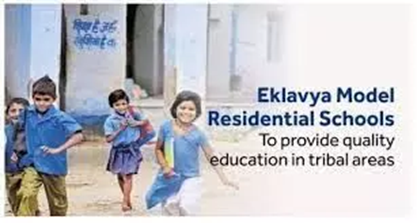 About:
About:
- The EMRS model was first introduced in 1997-98 to provide quality education to tribal students with residential facilities in remote corners.
- The aim was to build schools at par with the Jawahar Navoday Vidyalayas and Kendriya Vidyalayas.
- Each school has a capacity of 480 students, catering to students from Class VI to XII.
- The EMR School follows the CBSE curriculum.
- The schools focus not only on academic education but on the all-round development of the students.
https://www.thehindu.com/news/national/amazon-to-provide-tech-education-training-to-eklavya-teachers/article66314664.ece/amp/
Input Tax Credit (ITC) - Edukemy Current Affairs
Why in news? A taxpayer under GST will be required to reverse the input tax credit in case his supplier has failed to deposit the dues taxes.
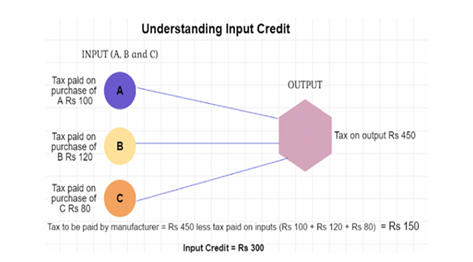 About:
About:
- It is the tax that a business pays on a purchase and that it can use to reduce its tax liability when it makes a sale.
- It means at the time of paying tax on output, one can reduce the tax that has already been paid on inputs and pay the balance amount.
- A business under a composition scheme cannot avail of an input tax credit. ITC cannot be claimed for personal use or for goods that are exempt.
- It can be opted for by any taxpayer whose turnover is less than Rs. 1.5 crore.
https://m.economictimes.com/news/economy/policy/govt-tweaks-gst-rules-for-claiming-input-tax-credit/amp_articleshow/96549862.cms
Mullaiperiyar Dam - Edukemy Current Affairs
Why in news? Recently, an alert has been sounded by Kerala as the water level in Mullaperiyar dam here reached its maximum permissible storage capacity.
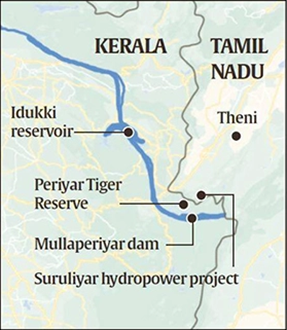 About:
About:
- It is a masonry gravity dam on the Periyar River in the Idukki district of Kerala.
- It was constructed between 1887 and 1895 by John Pennycuick.
- It is situated high up in the Western Ghats, adjacent to Kerala’s famed Periyar wildlife sanctuary.
- Mullaperiyar is listed among the world’s big dams that need to be decommissioned.
- The dam is owned, operated and maintained by Tamil Nadu.
https://m.economictimes.com/news/india/mullaperiyar-water-level-touches-142-ft-flood-alert-in-kerala/amp_articleshow/96535903.cms
NPA and Loan write off - Edukemy Current Affairs
Why in news? Recently, Banks wrote off more than Rs 10 lakh crore in loans over the last five years, according to RBI data under the Right to Information (RTI) Act.
About:
|
NPA |
Loan Write off |
|
Loan or advance for which principal or interest payment remained for a period of 90 days. Three categories of NPA:
|
Banks writes off a loan after borrower has defaulted on loan repayment and there is a very low chance of recovery.
|
https://rbidocs.rbi.org.in/rdocs/PressRelease/PDFs/PR14446CDB72BDD638493A94FB5ED8051E5B4A.PDF
https://indianexpress.com/article/explained/explained-economics/what-is-a-loan-write-off-and-why-do-banks-do-it-8283568/
Taliban's University Ban: Un-Islamic
Taliban’s War on Women
Exam View: India and its neighbourhood, India Policy related to its neighbour, India and Afghan relation, Rome statute, Right to Education, Right to Equality, Human rights.
In News: The Taliban’s announcement of a ban on female students studying in universities has attracted worldwide condemnation.
By the 1990s, 40 per cent of doctors in Afghanistan were women. Women also constituted 70 per cent of school teachers, 60 per cent of university professors and almost half of the university students.
The blanket ban on education for girls and women and other decisions effectively banish women from public life in Afghanistan. Women's literacy today is at a meagre 14 per cent.
The Taliban has proved us right by continuing with the highly regressive policies of the past regime (1996-2001).
The ban makes Afghanistan the only country in the world where girls and women are denied access to education.
The international community's response:
- India reiterated its commitment to an inclusive that respects the rights of all Afghans and ensures equal rights of women to participate in all aspects of Afghan society, including access to higher education.
- The ban has been criticised by Saudi Arabia, the UAE, and Pakistan, which recognised the Taliban administration from 1996 to 2001 (but not this time).
- Indonesia, Turkey, and Qatar have all questioned the restriction.
- Some nations claim that preventing women from receiving an education is against Islam.
- The chair of the G7 foreign ministers warned that the Taliban’s gender persecution may amount to a crime against humanity under the Rome Statute, to which Afghanistan is a State Party.
- The United States said that such decisions will further alienate the Taliban from the international community.
- Some 15 countries, including India, China, Russia, and Pakistan, have been engaging with the Taliban but no country has granted recognition to the Taliban.
The Rome Statute:
Way Forward:
- The international community - The Taliban, which depends heavily on external aid to run its administrative structures, may be discouraged from engaging by the international community, particularly India.
- Leading nations should establish venues outside of Afghanistan for non-Taliban Afghan leaders to organise and express an alternative vision, especially women who have previously won elections.
- The decision to cancel all visas: India - Female students pursuing an education in India were particularly harmed by New Delhi's decision to suspend all visas for Afghans.
- “Hands-off” approach: India, as the dominant nation in the area, ought to reconsider its "hands-off" policy toward the Afghan people, who have undoubtedly through numerous hardships over the past year.
Therefore, what the Taliban are doing to women is wholly incompatible with Islam. Their interpretation of Islam had not only barred women from attending universities, but also mosques. Their kind of Islam is distinct from the Islam that the Prophet introduced.
The international community must also understand that mere non-recognition of the Taliban regime would not help the Afghan women’s cause. In 2019, India enacted the CAA to help the persecuted religious minorities of Afghanistan. Let India under the Prime Minister’s presidency of G20 use his international stature and influence to force the Taliban to honour the Doha commitments. Let India become the most vocal advocate of women's empowerment in the world.
https://indianexpress.com/article/opinion/columns/in-banning-women-from-universities-the-taliban-is-being-unislamic-8344603/
The Chauka System: An Innovative Method of Water Harvesting
Background
Lapodiya a small village of Rajasthan, has developed an ingenious rainwater harvesting system, the Chauka that has regenerated degraded pastures. Since Lapodiya falls in an arid or semi-arid area of Rajasthan, it gets all the rainfall during monsoons at once and the government built mud contours could not hold such rainwater.
About the Chauka System
- A chauka is a rectangular enclosure surrounded on three sides by earthen bunds or embankments (dykes). The dykes are 1.5 metres high. Trees are planted on these dykes to give them additional support to withstand rain.
- Series of rectangles are constructed in a checker-board pattern across a natural slope and connected with shallow canals. The embankments intercept the runoff rainwater and collect it at the “down” end of the bunded field.

- During heavy rainfall, the water moves gradually from one chauka to another, which gives it more time to seep into the ground.
- The chaukas are built uphill from the village and its ponds and wells. The water collected in the chaukas replenishes underground water aquifers, gradually feeding the ponds and wells. Any above-ground overflow is directed to the village ponds via canals.
What are the benefits of Chauka System?
- Prevents soil erosion: Chauka system retains runoff water and reduces its velocity across a slope, minimizing erosion.
- Recharge Water Reservoir: The system makes it easy to direct excess water to ponds for storage.
- Regenerate vegetative cover: The system helps to maintain and regenerate natural vegetative cover. Such lands act as pastures for agro-pastoralists of the area.
- Ensure water security during drought and effectively uses marginal areas.
Where does Chauka system prove effective?
- Arid or semi-arid plain areas with erratic or scanty rain patterns
- Soil types: sandy loam to loamy (moderate to good infiltration capacity)
- The slope of the area not exceeding 0.5-2%
- The land is moderately problematic (saline or sodic)
Source:
https://gatherandgrowdotorg.wordpress.com/2013/07/25/the-chauka-system-an-innovative-method-of-water-harvesting/
Share the article
Get Latest Updates on Offers, Event dates, and free Mentorship sessions.

Get in touch with our Expert Academic Counsellors 👋
FAQs
UPSC Daily Current Affairs focuses on learning current events on a daily basis. An aspirant needs to study regular and updated information about current events, news, and relevant topics that are important for UPSC aspirants. It covers national and international affairs, government policies, socio-economic issues, science and technology advancements, and more.
UPSC Daily Current Affairs provides aspirants with a concise and comprehensive overview of the latest happenings and developments across various fields. It helps aspirants stay updated with current affairs and provides them with valuable insights and analysis, which are essential for answering questions in the UPSC examinations. It enhances their knowledge, analytical skills, and ability to connect current affairs with the UPSC syllabus.
UPSC Daily Current Affairs covers a wide range of topics, including politics, economics, science and technology, environment, social issues, governance, international relations, and more. It offers news summaries, in-depth analyses, editorials, opinion pieces, and relevant study materials. It also provides practice questions and quizzes to help aspirants test their understanding of current affairs.
Edukemy's UPSC Daily Current Affairs can be accessed through:
- UPSC Daily Current Affairs can be accessed through Current Affairs tab at the top of the Main Page of Edukemy.
- Edukemy Mobile app: The Daily Current Affairs can also be access through Edukemy Mobile App.
- Social media: Follow Edukemy’s official social media accounts or pages that provide UPSC Daily Current Affairs updates, including Facebook, Twitter, or Telegram channels.

